Excerpts from Jim Conrad's
Naturalist Newsletter
from the December 6, 2009 Newsletter issued from Hacienda Chichen Resort beside Chichén Itzá Ruins, central Yucatán, MÉXICO; limestone bedrock, elevation ~39m (~128ft), ~N20.676°, ~W88.569°
NANCE FLOWERING
A couple of weeks ago we looked at the Barbados Cherry (www.backyardnature.net/yucatan/barbados.htm) Nowadays in the Yucatan a handsome small tree maybe 30 feet tall is bearing flowers that look very much like the Barbados Cherry's, except that they're yellow, not pink. A slender raceme of them is shown below:
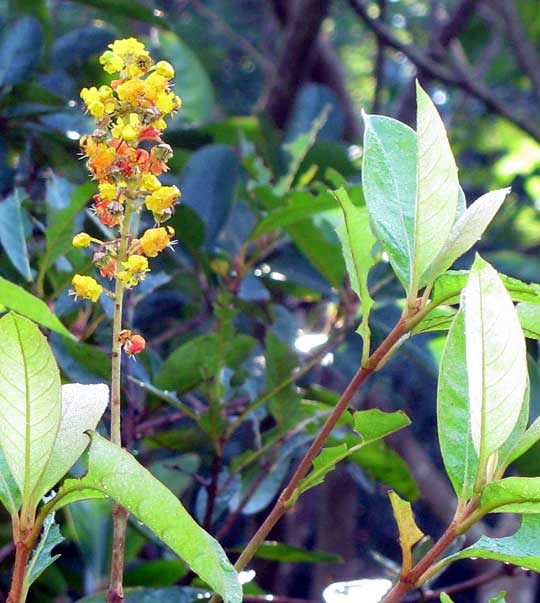
This species is much planted throughout the New World tropics for its edible, marble-size, yellow fruits. In English it's often called Nance or Golden Spoon and in Spanish Nanche. It's BYRSONIMA CRASSIFOLIA, of the same family as the Barbados Cherry, the Malpighiaceae.
At first the flowers are yellow but with age they turn orangish. A close-up of a dew-wet blossom appears below:
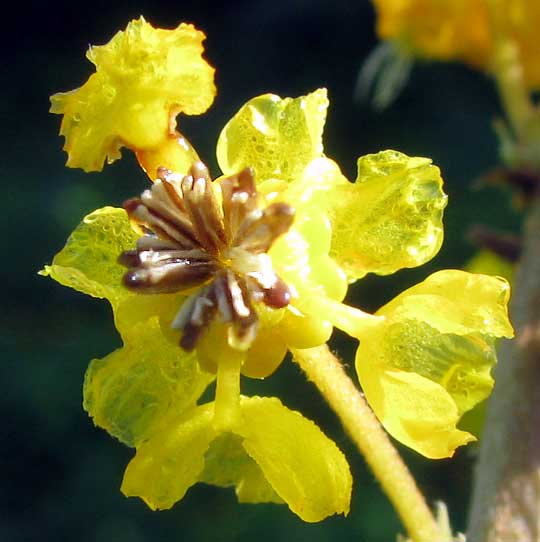
As with Barbados Cherry flowers, one of the most distinguishing features of the blossom is the pair of rounded glands on each sepal, as shown below:
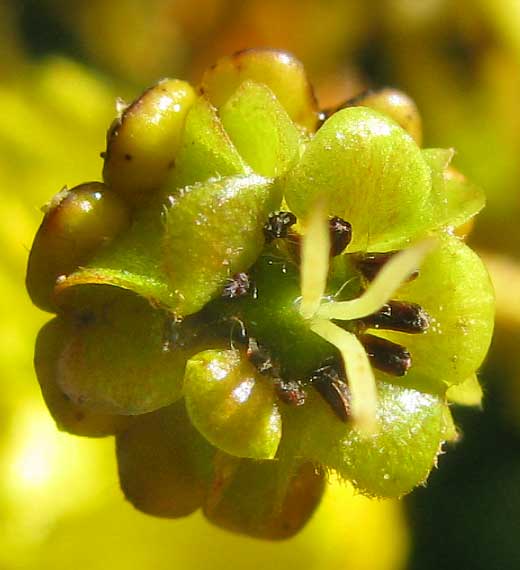
In that picture pollination already has taken place and the petals have withered and fallen off leaving the enlarging, three-styled ovary -- the future fruit -- and ten drying-up, blackening stamens. The sepals have enlarged somewhat, their points and sides flaring backward. Two remarkable glands grow on the back of each sepal like engorged ticks.
When Nance fruits are ripe, traditional markets are full of them at very low prices. They're abundant and easy to harvest, but their taste is just so-so, from tasteless to a little acidy to a little sweet, and maybe with just a hint of cheesiness. Each fruit contains a large seed so there's not much flesh to them, either. My impression is that nowadays Nance fruits are mostly used in the backcountry, and then mainly to produce a sweetened, somewhat fizzy beverage tasting like Kool-Aid.
Nance is native from southern Mexico through the Pacific side of Central America to Peru and Brazil. The tree grows well in sandy and rocky soil, and tolerates extended droughts, so that's probably another reason it's so commonly grown. I think it's being grown here just for the birds.
Medicinally the Nance tree's bark is astringent and in Mexico has been used traditionally to firm up loose teeth and control diarrhea.
from the August 15, 2010 Newsletter issued from Hacienda Chichen Resort beside Chichén Itzá Ruins, central Yucatán, MÉXICO; limestone bedrock, elevation ~39m (~128ft), ~N20.676°, ~W88.569°
NANCE FRUITING
Nowadays Nance is fruiting, as can be seen below:
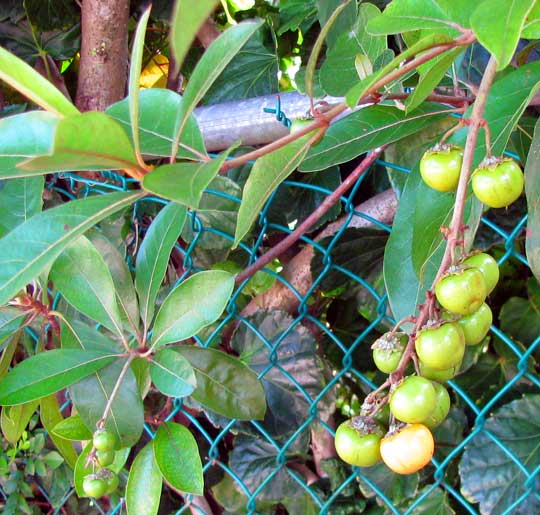
Last December I pointed out that one of the most unusual features about the Nance flower is that each of its yellow, fleshy sepals bears two conspicuous glands on its underside. Now the sepals have turned brown and hardened to a leathery texture, but they still bear their odd-looking but weather-worn glands, as shown below:
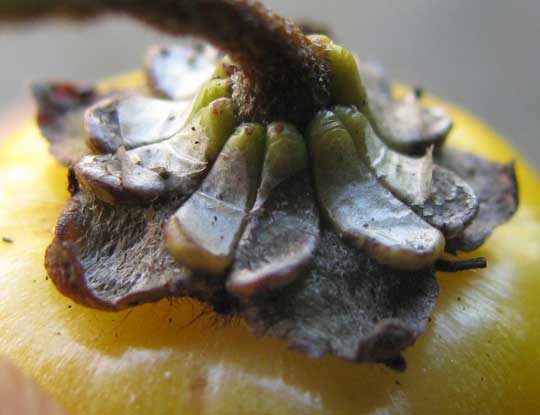
Gland-bearing sepals are a feature not just of Nance, but also of the entire large, mostly tropical family Nance belongs to, the Malpighia Family, the Malpighiaceae.